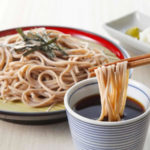The packaging design of manufacturers often holds a hidden reason. Why do they choose the number 4 to determine the quantity for each pack of products? Today, let’s find the answer together.
1 The Origin of Yogurt Packaging Design
 The origin of yogurt packaging design
The origin of yogurt packaging design
First and foremost, it is important to note that the origin of yogurt packaging design stems from Japan. When it comes to quality and design, the Japanese are known for their meticulous attention to detail.
2 Why Are There Always 4 Yogurt Cups in a Pack?
 Why are there always 4 yogurt cups in a pack?
Why are there always 4 yogurt cups in a pack?
According to Mr. Tomishima Ryoichi of Danon Japan Foods: “Japanese people usually eat yogurt for breakfast. At this time, the whole family gathers around the dining table, so a pack of 4 yogurt cups is just enough for parents and children.” This 4-cup design makes it easier for customers to use and demonstrates the company’s attention to detail and understanding of their customers.
Using 4 as the base number, this yogurt design caters to the needs of various family types, whether it’s a couple (2 people) or a large family (6-8 people). The design of a 4-pack is more suitable for the common family structure of a couple with two children in many Asian countries.
 The 4-pack design is suitable for a couple with two children, a common family structure in many Asian countries.
The 4-pack design is suitable for a couple with two children, a common family structure in many Asian countries.
From another perspective, the Japanese also design their pudding packs with 3 cups for the same reason. Pudding is a sweet and creamy dessert, often enjoyed by children and adults in the evening. Japanese men usually come home from work late, so there will only be three family members eating pudding.
The Japanese pay attention to even the smallest details, and this serves as a model for other businesses to follow if they want to succeed in conquering customers. Understanding your customers’ psychology and providing them with perfect values are key. This also reaffirms the Japanese business philosophy: “Put customers first and you will succeed”.
In this article, we have answered the question of why a pack of fresh milk or yogurt always contains 4 cups and not any other number. We hope that you have found this information insightful and useful.






































